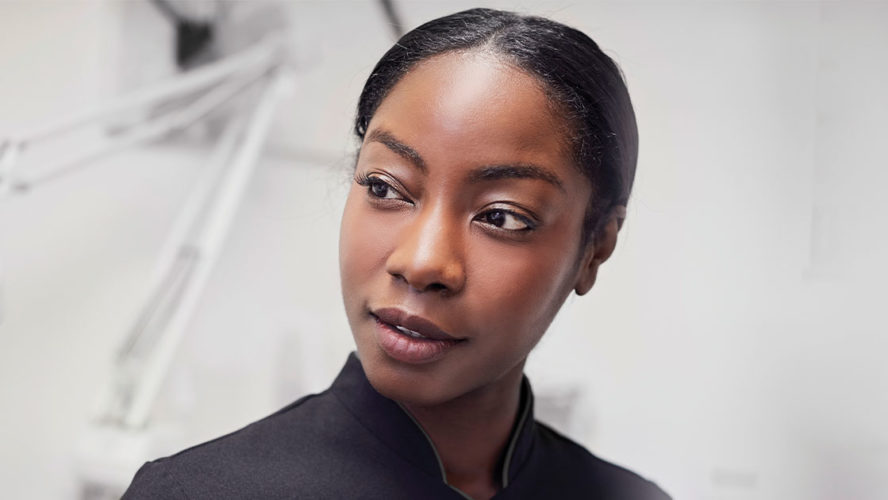Nearly 75% of people globally have some level of misalignment of the teeth, known as malocclusion. That’s according to a study in the Dental Press Journal of Orthodontics.
The World Health Organization says malocclusions are the third most prevalent oral health problem globally, after tooth decay and periodontal disease, which is the inflammation and infection of the gums.
Orthodontic solutions can be used to correct malocclusions. For example, ClearCorrect aligners, made by Straumann Group, are comfortable, discreet aligners made of clear, removable plastic. They can be removed to eat, brush, or floss.
Here’s how they work: Photos of the patient’s teeth are taken in a dentist’s office, and the teeth are digitally scanned. Then ClearCorrect makes the aligner trays, which are available in about two weeks. The patient must wear them 22 hours a day to straighten their teeth. They will get new trays every few weeks until they complete their treatment, which typically happens in under two years.
Starting the conversation
Often patients don’t know they could benefit from orthodontic care and/or don’t realize their dentist can assist them with orthodontic solutions. But that conversation can start with dental hygienists. After all, the patient spends more time with the hygienist than they do with the dentist.
“They trust you more; you have a bigger role in their life,” said Tina Braesch, hygiene director of the learning and performance team at Espire Dental. “You’re not just cleaning teeth, you’re treating them as an overall person, which I think then pulls in that occlusion discussion.”
As part of a patient’s customized personal care, the hygienist should be checking a patient’s fillings, restorative work, gum health, and need for orthodontic care.
Body-mouth connection
A patient’s malocclusions go beyond aesthetics and just having a nice smile. There are overall health implications for malocclusions, which is called the body-mouth connection.
“There are certain bacteria we find in periodontal disease,” said Braesch, who’s been a hygienist for 30 years. “When you have more crowding, you have more bacteria. When those teeth are misaligned, the bacterial load in the mouth is way higher.”
She says when bacteria are controlled, a patient’s risks for heart disease, stroke, diabetes, and dementia goes down considerably. Fixing malocclusions can have other health benefits, too, such as improving sleep apnea (since improper teeth positioning can block the airway) and correcting constricted bites, which can help reduce receding gums and reducing pressure on the teeth that could otherwise cause them to crack or break.
Hygienists’ influence
Empowering hygienists to recommend orthodontic solutions could make a significant difference for many people with malocclusions. Braesch encourages hygienists to start the orthodontic solutions conversation with patients. If hygienists are shy about talking to their patients about the need for orthodontic care, she suggests using cameras to show patients photos of their respective malocclusions.
“If you aren’t suggesting or bringing up opportunities that could benefit your patients, but they can see those benefits somewhere else, they’ll go somewhere else,” she said. “We can’t fail in not suggesting it.”
That’s why it’s important to have investment from the whole dental team, including the hygienists and front office staff, and not just the dentist. Braesch says ClearCorrect has created buzz with her team. For example, the company does virtual and in-person team trainings to build knowledge about the product.
“ClearCorrect has done a great job in systemizing things to make sure it’s simple,” she said. “Because if it’s not simple, people will not continue to do it.”
For more information about ClearCorrect, visit straumann.com/clearcorrect/us/en/patients.html


